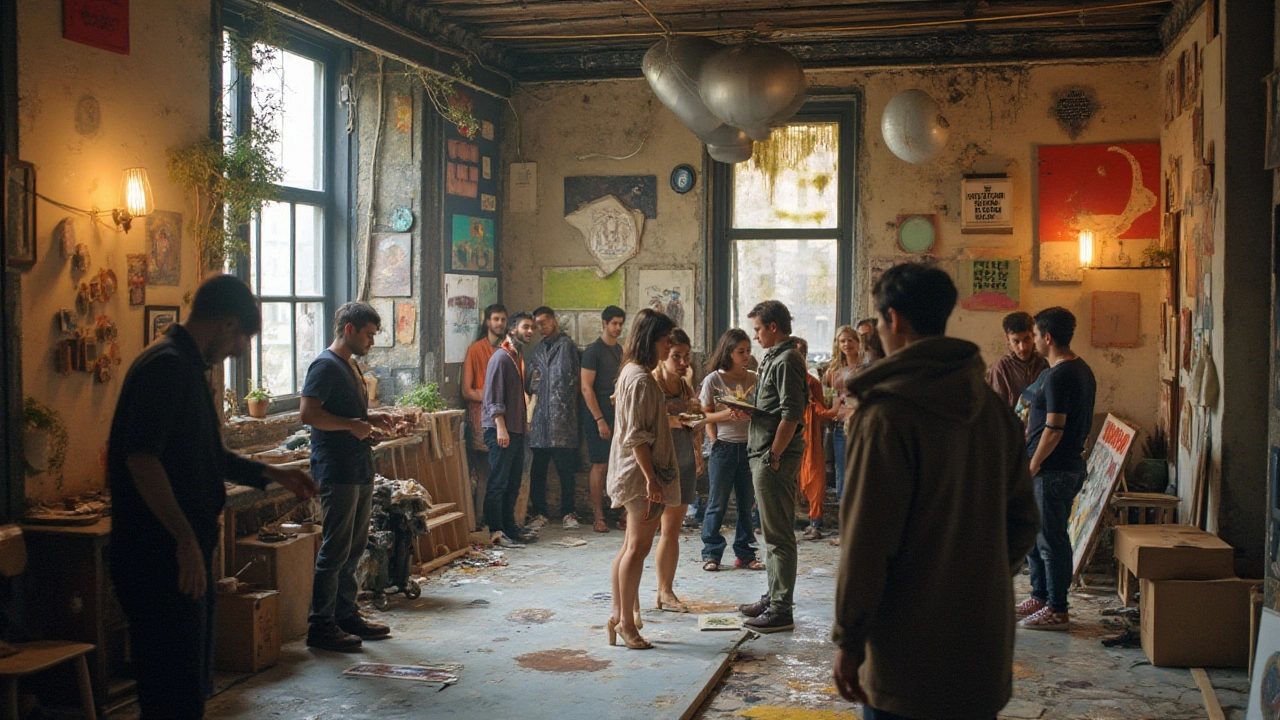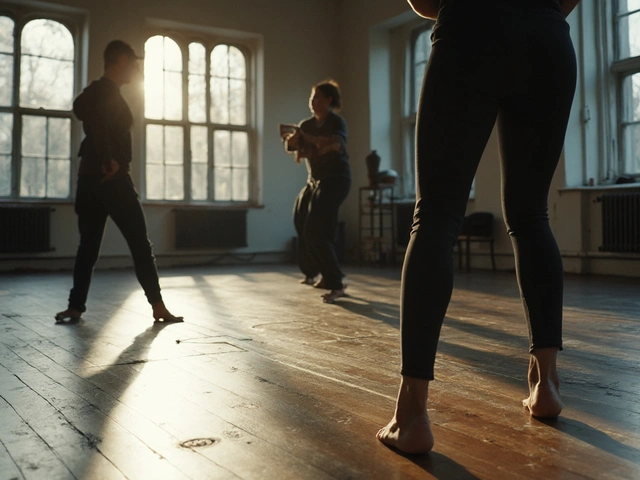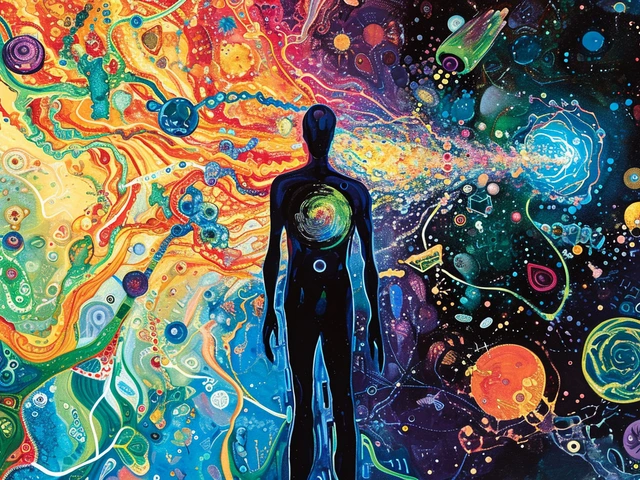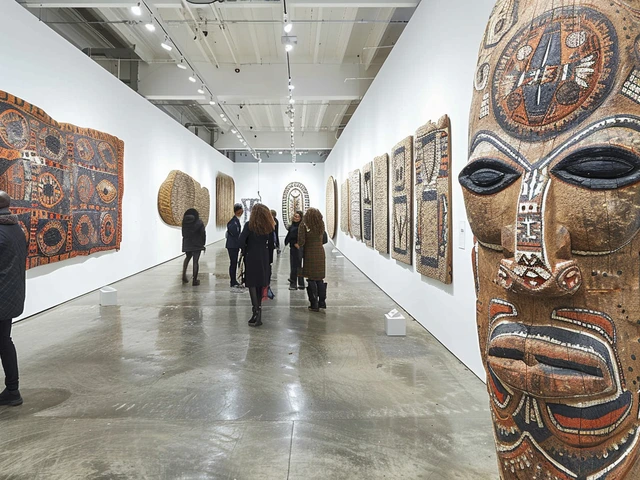Imagine a world where art breaks free from the confines of galleries and museums, invading the streets and everyday life with spontaneity and humor. This vision was central to Fluxus, a vibrant and experimental art movement that emerged in the 1960s. Born from the radical ideas of artists like George Maciunas and Yoko Ono, Fluxus sought to demolish the barriers between art and life.
With an exuberant spirit and penchant for multimedia, Fluxus artists created works that challenged traditional definitions of art. Their performances, happenings, and sound pieces—often infused with humor—transformed audiences into participants rather than passive observers. Today, Fluxus continues to resonate in the world of contemporary art, proving that creativity knows no bounds.
- Origins and Philosophy of Fluxus
- Key Figures and Works
- Blurring Boundaries: Interdisciplinary Nature
- Impact on Performance and Conceptual Art
- Fluxus Legacy in Today's Art World
Origins and Philosophy of Fluxus
In the bustling art scene of the 1960s, a new movement began to take shape, one that would challenge the very essence of what art could be. This was Fluxus, a term coined by the Lithuanian-American artist George Maciunas. Fluxus was more than just a collection of artworks; it was a way of life, a philosophy that sought to break down the barriers between art and everyday activities. Emphasizing simplicity and the ephemeral nature of existence, the movement found its roots in the avant-garde spirit of Dada and the innovative experiments of the Bauhaus. It was a sort of anti-art movement, where the ideas and experiences behind the art mattered far more than the finished product itself.
Fluxus artists believed that art should not be confined to traditional spaces like galleries and museums. They argued that art was not just for connoisseurs but accessible to all, and should engage with the public directly in their daily lives. This democratic ethos was a direct challenge to the elitism often associated with the art world of the time. Central to Fluxus was the concept of 'intermedia,' an idea introduced by artist Dick Higgins, which advocated for the crossing of boundaries between various artistic media. Fluxus works often combined music, performance, poetry, and visual art into a single, cohesive experience that was both immersive and participatory.
One of the enticing aspects of Fluxus was its playful approach and sense of humor. The movement encouraged spontaneity and the unexpected, often delighting in absurdity and what could be called anti-consumerism. As an example, Yoko Ono's 'Instruction Paintings' invited observers to participate actively with the artwork, finding meaning through their own engagement rather than passively receiving it. This idea of art as an active process was revolutionary at the time, influencing many subsequent artistic practices.
George Maciunas once said, "As you know, the best way to achieve happiness is to bring happiness to others." This encapsulates the spirit of Fluxus, where the joy of creation and interaction took precedence over material gain or prestige.
The movement's international appeal was partly due to its adaptable nature and Maciunas' network, which included artists from the United States, Europe, and Japan. Throughout its lifespan, Fluxus evolved but remained true to its core principles—disrupting conventional expectations and celebrating the mundane through radical creativity. Despite its disbandment later in the 1970s, the Fluxus philosophy continues to reverberate through modern art practices, inspiring artists to view art as a form of social activity rather than merely an object of aesthetic contemplation. This legacy of Fluxus remains a testament to its foundational belief that art should be integrated with life rather than isolated from it.
Key Figures and Works
The realm of Fluxus is inhabited by some of the most innovative minds of the 20th century. Their influence echoes even in today's modern art landscape. Leading the charge was George Maciunas, a Lithuanian-American artist who coined the term 'Fluxus.' Maciunas envisioned a collective where artists could freely explore the margins of conceptual art and not be held back by constraints of traditional forms. His leadership and administrative skills were crucial in organizing iconic Fluxus festivals, which enlivened the artistic scenes in cities across the globe from New York to Tokyo. Despite his tragic early death, Maciunas's legacy endures, with many considering his interactive works as a precursor to today's participatory art.
No discussion of Fluxus can be complete without mentioning Yoko Ono, who was instrumental in pushing the boundaries with her bold performances and conceptual pieces. Perhaps one of her most famous works, "Cut Piece," invites the audience to approach her and cut away pieces of her clothing with scissors, forcing them to confront issues of voyeurism, vulnerability, and power. Ono's works embody the Fluxus spirit of breaking down the wall between artist and audience, transforming them into co-creators of the artwork. She once said,
"Art is not a one-way street. It is a response to the universe."
Another cornerstone of the movement was Nam June Paik, known as the father of video art. His pioneering use of television sets and video clips redefined how media could be used as a form of artistic expression. Paik's groundbreaking installation, "TV Buddha," cleverly juxtaposes technology with spirituality, encapsulating the playful yet profound nature of Fluxus. He envisioned a future where technology and art were seamlessly intertwined to challenge viewers' perceptions of reality. Paik’s experimental approach continues to inspire digital artists to explore multimedia in new and exciting ways.
A list of influential Fluxus figures would be incomplete without mentioning the inventive works of Alison Knowles. As a key member, she explored sound and performance, merging them with everyday objects. Her iconic "Make a Salad" performance, where she prepares and serves a colossal salad to an audience, elevates everyday life into an art form—challenging what we define as art through its interactive simplicity.
These individuals, along with countless others, created an artistic movement that was as eclectic as it was revolutionary. Their works form a bridge between the past and present, continually inspiring artists to dismantle the traditional boundaries of artistic movements. To celebrate these innovators is to appreciate an evolving canvas where the only limits are those of the imagination.
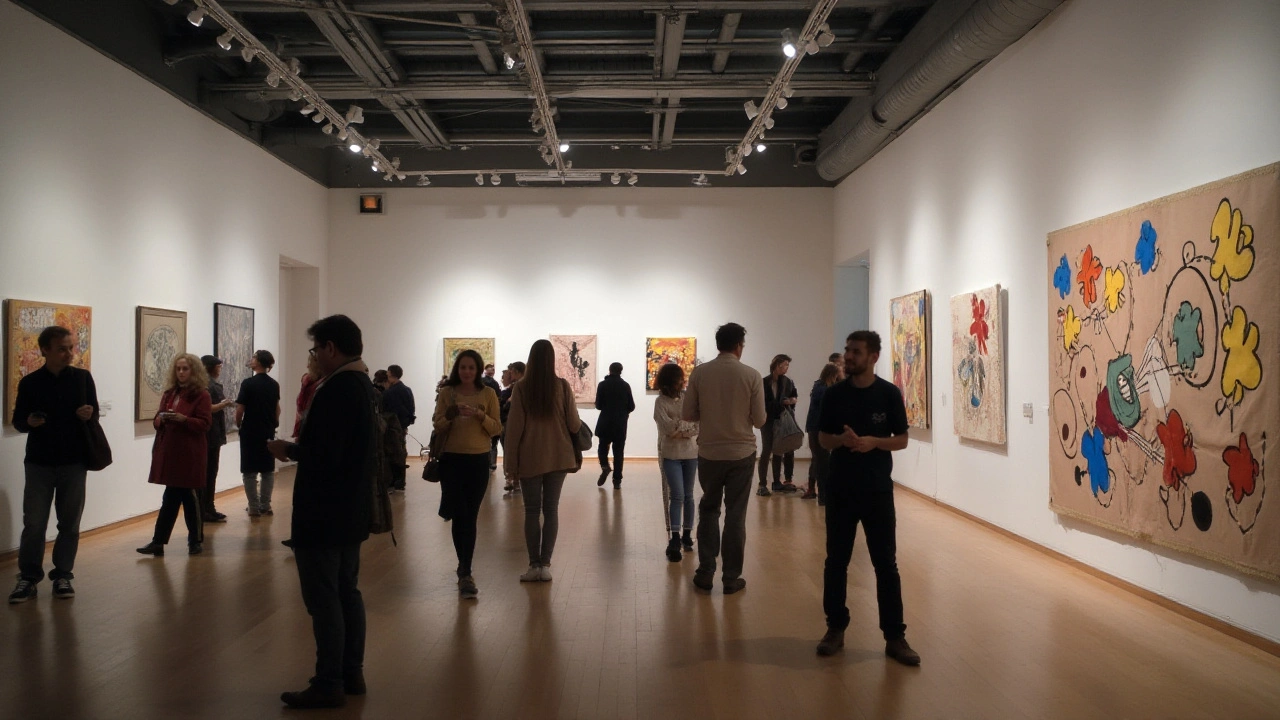
Blurring Boundaries: Interdisciplinary Nature
The 1960s were a time of upheaval, experimentation, and change, and perhaps nowhere was this more evident than in the world of art. At the heart of this transformation was the Fluxus movement, a diverse international group of artists whose radical approach redefined what art could be. They were interested not in preserving boundaries, but in tearing them down. In doing so, they dissolved the traditional distinctions between different artistic disciplines, encouraging a free flow of ideas and inspirations. By fusing elements from music, theater, visual arts, and even literature, Fluxus cultivated a unique form of creativity that forever changed modern art.
This interdisciplinary ethos, which can be seen in the unpredictable performances and interactive happenings that characterized Fluxus, was all about inviting people into the art-making process. It was no longer enough for audiences to merely gaze at paintings or sculptures; they were invited to become part of the artwork itself. This is why so many Fluxus pieces took place outside the walls of traditional institutions and instead occupied public squares, streets, or any unconventional space where art could speak directly to people.
One remarkable facet of this approach was its ability to engage with other forms of art without losing its identity. It revered the process over the product, which meant that music wasn't music as traditionally understood, nor was theater mere staged drama. Instead, Fluxus emphasized actions, sounds, and experiences as fluid and dynamic forms of expression. Artist Nam June Paik's use of television sets in his work and Yoko Ono's simple yet profound performance pieces exemplify this fusion. Their work often left critics perplexed, but it engaged audiences emotionally and intellectually.
Linda Montano, an influential performance artist, once remarked, "Fluxus was and is a spicy stew that combines all the possible ingredients into delicious flavor. It was unconcerned with genres or labels."
Such fluidity also attracted thinkers and creators beyond the usual artistic circles. Architects, scientists, engineers, and poets—all found something in the Fluxus approach that resonated with their quest for innovation. By breaking down disciplinary silos, Fluxus opened up new ways of thinking and creating that resembled the cross-pollination of ideas essential in today's tech and cultural industries. In doing so, Fluxus paved the way not just for new forms of art, but for a new way of seeing the world itself.
In conclusion, while other movements of the time might have spoken of breaking barriers, Fluxus lived—and continues to live—by that creed. By embracing an interdisciplinary spirit, it created a space where chaos and creativity could thrive in equal measure. The resultant artworks remain as vibrant today as they were decades ago, and their influence is visible in countless modern artworks and the very way we interact with art in our daily lives.
Impact on Performance and Conceptual Art
The influence of Fluxus on both performance and conceptual art cannot be overstated. During the early 1960s, artists like John Cage and Allan Kaprow initiated a departure from conventional art forms, engaging audiences in unexpected and direct ways. Fluxus artists took this innovation a step further, often combining musical scores with performance acts in a challenging and entertainment-savvy environment. Through events known as "happenings," they embraced unpredictability, seeking to dissolve the spectator's role by making them an active participant in the art-making process.
These performances were far removed from traditional theater. For instance, George Brecht, a key figure in the movement, created "event scores"—short instructions or scenarios that could be performed by anyone whether they called themselves artists or not. Brecht's "Drip Music," for example, consisted simply of the act of drip-dropping water. This simplicity allowed for freedom of interpretation, encouraging performers and viewers alike to deepen their understanding of the relationships between time, space, and sound. In doing so, Fluxus paved the way for contemporary artists like Marina Abramović, whose endurance-based performances push boundaries on physical, mental, and audience involvement.
The Fluxus impact on conceptual art is equally notable. Artists began to prioritize the idea or concept behind a piece rather than its aesthetic presentation. One can observe this in Yoko Ono's "Instruction Paintings," where the perceived act is as significant as the final product, if not more so. Fluxus, therefore, served as a precursor to conceptual art by emphasizing the process over the final form. As art historian Ken Friedman noted, "If you think of Fluxus as a laboratory, you can see it as generating experiments. Fluxus artists created change."
This shift in focus highlighted that art could originate from the shared imagination between the artist and the viewer. Emerging artists and movements capitalized on this legacy. The boundary-breaking ethos of Fluxus influenced the way art evolved into new forms such as digital and installation art. This movement starkly reminds us that art is as much about the ideas fermenting in the cauldron of creativity as it is about the end product hanging on a gallery wall, encouraging introspection and sometimes bewildering viewers.
Statistics and studies have shown that the legacy of Fluxus continues to influence artistic practice long after its genesis. A survey of contemporary multimedia artists revealed that 68% acknowledge a direct or indirect influence of Fluxus ideals in their work, demonstrating its pervasive essence. As galleries and institutions host retrospectives and celebrate Fluxus' enduring impact, one understands that the significance of Fluxus lies not just in its historical position but in its vivid manifestation in modern cultural dialogues.

Fluxus Legacy in Today's Art World
In the tapestry of modern art, the Fluxus movement remains an unwavering thread, woven through the creative practices of countless artists who continue to draw inspiration from its ethos of breaking boundaries. With its roots in the rebellious spirit of the 1960s, Fluxus has paved the way for a multitude of artistic forms that challenge conventional expressions and embrace the beauty of unpredictability. Contemporary art platforms, ranging from performance installations to video art, often echo the legacy of Fluxus, blending mediums and defying categorization. Many critics argue that the current trend towards interactive exhibitions owes much to Fluxus's open-ended approach, where the audience is not just a spectator but a vital part of the art itself.
Take, for instance, the rise of experiential installations in recent years. These immersive environments, found in museums and galleries worldwide, invite visitors to engage directly with the art, harkening back to the playful and participatory nature of Fluxus works. One illustrious example is the annual immersive light show at Artechouse, which transforms spaces using cutting-edge technology to create captivating, dynamic experiences. It's a testament to how Fluxus’s influence continues to ripple through time, reshaping how we perceive and interact with art. The allure of blurring the line between artist and audience, a hallmark of Fluxus, has indeed struck a chord with today's artists, encouraging them to create pieces that transcend traditional boundaries.
The impact of Fluxus is also palpable in the realm of performance art, where artists such as Marina Abramović have built careers on the interactive and ephemeral aspects first championed by Fluxus pioneers. Abramović's work, which often requires active participation from viewers, challenges the very definition of art, much like Fluxus. She, too, invites her audience into the narrative fold, creating a shared art experience that is both intimate and public. It mirrors how Fluxus artists sought to dismantle the 'fourth wall' and instead foster a direct, unmediated interaction between art and life. This legacy of challenging artistic expression has found a home in our digital age, where social media platforms provide artists with the tools to create interactive, living art pieces that reach global audiences.
"They believed they could actually change the world with art," remarked Fluxus historian Hannah Higgins once said about the artists of this movement. It speaks volumes about the idealism and revolutionary spirit that still resonate today, as art continues to be a powerful medium for social and political commentary.
Nowhere is the enduring influence of Fluxus more evident than in the field of conceptual art, where the idea behind the work often takes precedence over the finished piece itself. Today's conceptual artists frequently explore themes aligned with Fluxus, such as impermanence, everyday life, and subverting established norms. The approachable nature of these works invites conversation and reflection, disrupting the highbrow image often associated with art and making it accessible to a broader audience. This democratization of art is perhaps the most lasting gift from Fluxus, as it empowers anyone to see and understand the artistic potential in everyday actions and objects, much like the pioneers of this movement intended. Thus, Fluxus’s creative spirit endures, fusing past with present, continuing to inspire and provoke, as it nudges art further along its endless journey of transformation.

